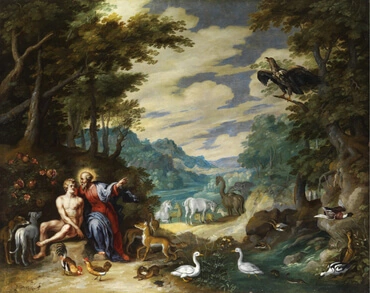1
هذا كتاب مواليد آدم. يوم خلق الله الانسان على شبه الله عمله
2
ذكرا وانثى خلقه وباركه ودعا اسمه آدم يوم خلق.
3
وعاش آدم مئة وثلاثين سنة وولد ولدا على شبهه كصورته ودعا اسمه شيثا.
4
وكانت ايام آدم بعدما ولد شيثا ثماني مئة سنة وولد بنين وبنات.
5
فكانت كل ايام آدم التي عاشها تسع مئة وثلاثين سنة ومات
6
وعاش شيث مئة وخمس سنين وولد أنوش.
7
وعاش شيث بعدما ولد أنوش ثماني مئة وسبع سنين وولد بنين وبنات.
8
فكانت كل ايام شيث تسع مئة واثنتي عشرة سنة ومات
9
وعاش أنوش تسعين سنة وولد قينان.
10
وعاش أنوش بعدما ولد قينان ثماني مئة وخمس عشرة سنة وولد بنين وبنات.
11
فكانت كل ايام أنوش تسع مئة وخمس سنين ومات
12
وعاش قينان سبعين سنة وولد مهللئيل.
13
وعاش قينان بعدما ولد مهللئيل ثماني مئة واربعين سنة وولد بنين وبنات.
14
فكانت كل ايام قينان تسع مئة وعشر سنين ومات
15
وعاش مهللئيل خمسا وستين سنة وولد يارد.
16
وعاش مهللئيل بعدما ولد يارد ثماني مئة وثلاثين سنة وولد بنين وبنات.
17
فكانت كل ايام مهللئيل ثماني مئة وخمسا وتسعين سنة ومات
18
وعاش يارد مئة واثنتين وستين سنة وولد اخنوخ.
19
وعاش يارد بعدما ولد اخنوخ ثماني مئة سنة وولد بنين وبنات.
20
فكانت كل ايام يارد تسع مئة واثنتين وستين سنة ومات
21
وعاش اخنوخ خمسا وستين سنة وولد متوشالح.
22
وسار اخنوخ مع الله بعدما ولد متوشالح ثلث مئة سنة وولد بنين وبنات.
23
فكانت كل ايام اخنوخ ثلث مئة وخمسا وستين سنة.
24
وسار اخنوخ مع الله ولم يوجد لان الله اخذه
25
وعاش متوشالح مئة وسبعا وثمانين سنة وولد لامك.
26
وعاش متوشالح بعدما ولد لامك سبع مئة واثنتين وثمانين سنة وولد بنين وبنات.
27
فكانت كل ايام متوشالح تسع مئة وتسعا وستين سنة ومات
28
وعاش لامك مئة واثنتين وثمانين سنة وولد ابنا.
29
ودعا اسمه نوحا. قائلا هذا يعزّينا عن عملنا وتعب ايدينا من قبل الارض التي لعنها الرب.
30
وعاش لامك بعدما ولد نوحا خمس مئة وخمسا وتسعين سنة وولد بنين وبنات.
31
فكانت كل ايام لامك سبع مئة وسبعا وسبعين سنة ومات







